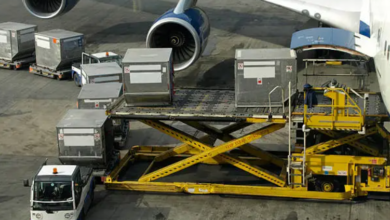RFID Label vs QR Codes: Which Is Better for Modern Supply Chains?

In today’s fast-paced supply chains, efficiency and accuracy are paramount. RFID Labels have become a popular technology for tracking inventory and assets. Unlike traditional barcodes or QR codes, RFID labels use radio waves to communicate data without direct line-of-sight. This allows for faster scanning of multiple items simultaneously, reducing human error and speeding up processes. Furthermore, RFID labels can store more data than QR codes, offering richer information for supply chain management. They enable real-time tracking and automated inventory management, which modern supply chains need to stay competitive. This section explores how RFID labels enhance visibility and streamline logistics workflows.
The Rise of QR Codes in Supply Chain Management
QR codes have surged in popularity due to their simplicity and low cost. These two-dimensional barcodes can be scanned easily using smartphones, making them accessible for many businesses. QR codes allow quick access to product information, tracking details, and even authentication data.
Despite their ease of use, QR codes require a direct line-of-sight and typically scan one item at a time. This limitation can slow down operations in high-volume environments. QR codes remain versatile, especially for smaller-scale or budget-conscious supply chains. This part examines their role and suitability for various logistics scenarios.
Comparing Data Capacity and Storage
A significant difference between RFID Labels and QR codes lies in their data storage capabilities. RFID labels can hold more data, including dynamic information updated throughout the product lifecycle. This feature is critical for supply chains needing detailed tracking, condition monitoring, or compliance documentation.
On the other hand, QR codes store static data, usually limited to a URL or a small dataset. While sufficient for many applications, this limitation reduces flexibility in complex supply chains. Companies must assess their data needs carefully when choosing between these technologies.
Speed and Efficiency in Inventory Management
Speed is crucial in supply chain operations. RFID labels outperform QR codes by enabling bulk scanning without requiring line-of-sight. This means warehouse staff can scan entire pallets or boxes in seconds. The efficiency gain reduces labour costs and minimizes human errors during stocktaking or shipping.
In contrast, QR codes require manual scanning of each item individually, which can be time-consuming. However, QR codes are easier to deploy and require no specialized equipment beyond a smartphone or scanner. This section explores how these speed differences impact operational throughput.
Durability and Environmental Resistance
Supply chains often expose tracking technologies to harsh conditions. An RFID Label tends to be more durable than printed QR codes. They withstand moisture, dirt, and physical wear better, maintaining readability over long periods. This resilience suits industries like manufacturing, pharmaceuticals, and outdoor logistics.
QR codes can degrade quickly when exposed to environmental factors or physical damage. When scanning fails, it leads to delays and inaccuracies. Therefore, businesses operating in harsh environments might prefer RFID labels for their robustness and reliability.
Cost Considerations and ROI
Cost plays a pivotal role in technology adoption. QR codes are inexpensive to produce and easy to implement. They suit businesses with tight budgets or low-volume logistics needs. In contrast, RFID labels involve higher upfront costs for tags and readers but offer long-term savings through efficiency improvements.
The return on investment (ROI) depends on the scale and complexity of the supply chain. Large enterprises benefit significantly from RFID’s automation and accuracy, justifying the initial expenses. Smaller operations may find QR codes sufficient until growth demands advanced solutions.
See also How Can A Team Train For A Team Penning Event?
Integration with Existing Systems and Scalability
Supply chain technologies require scalability and system integration. RFID labels integrate well with warehouse management systems (WMS) and enterprise resource planning (ERP) software. They support automated data collection, enabling seamless workflows and data analytics.
QR codes also integrate easily, especially in systems designed for manual scanning and customer engagement. However, they may struggle with scalability in large, fast-moving supply chains. This segment reviews the ease of technology adoption and future-proofing supply chain infrastructure.
Why RFID Label Often Leads in Modern Supply Chains
Choosing RFID labels and QR codes depends on specific business needs. RFID labels provide unmatched advantages in speed, data capacity, and durability for fast, accurate, and large-scale operations. They support automation and real-time tracking, which are essential for competitive supply chains. QR codes remain a cost-effective, accessible option for simpler or smaller-scale logistics. Businesses must evaluate factors like volume, environment, and budget. Still, RFID labels often prove to be a better investment for modern supply chains that aim to optimize performance and reduce errors. By embracing RFID technology, companies can future-proof their operations and achieve greater supply chain visibility.




